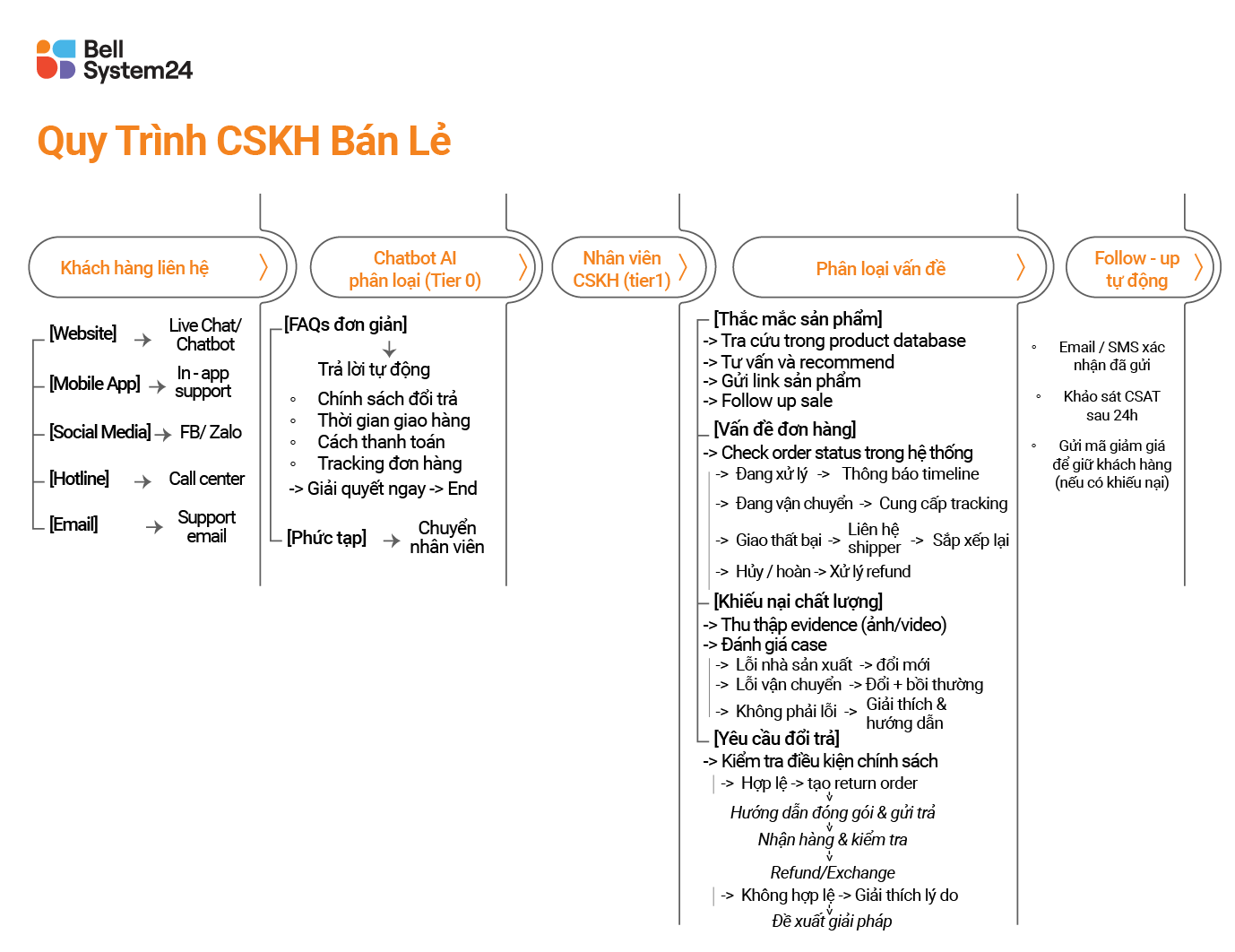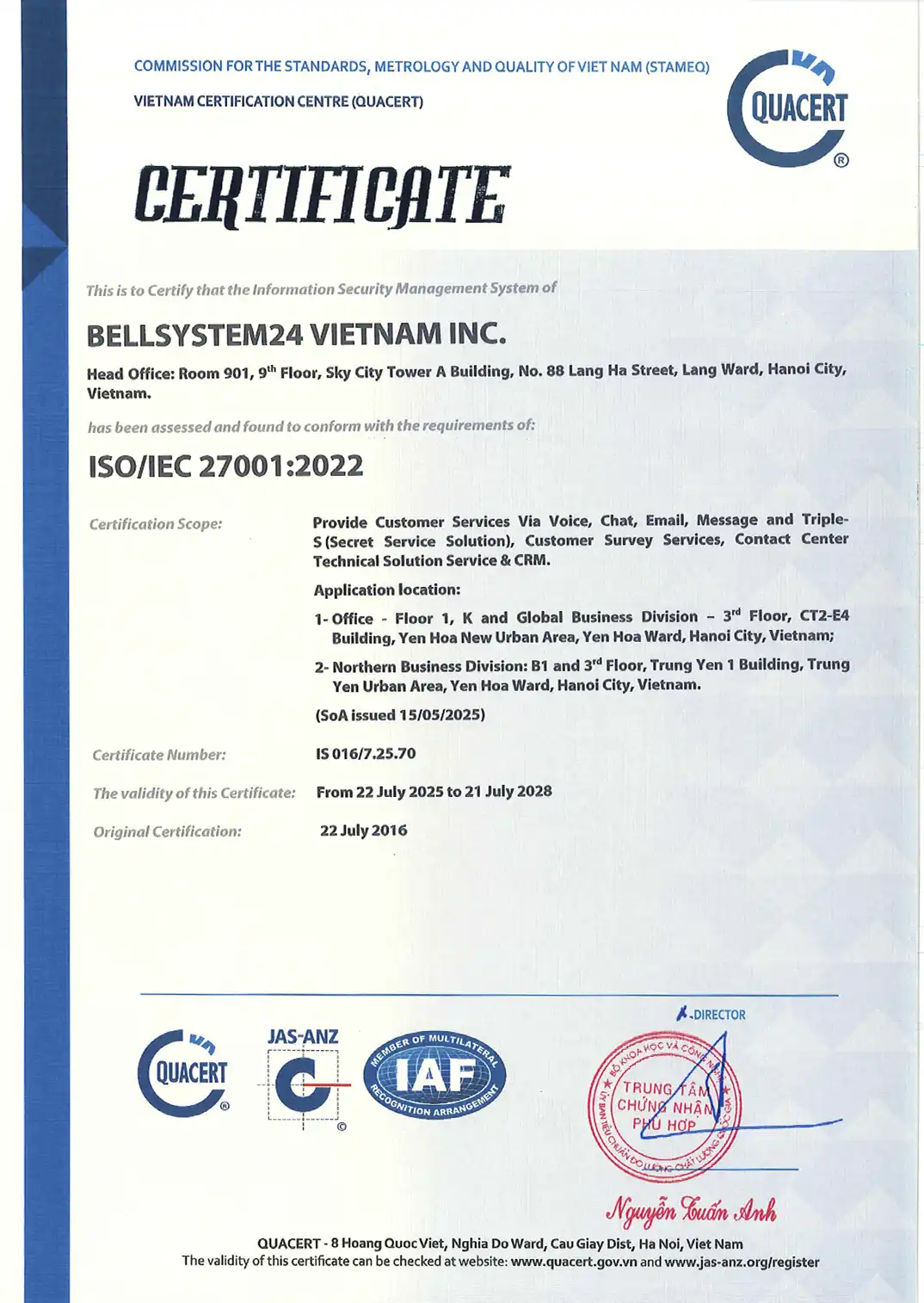Call volume is the number of calls that call center Processing within a specific timeframe (including inbound and outbound channels). This is a key metric for measuring performance and allocating call center resources.

Should call volume be high or low?
Call volume depends on the characteristics and operational objectives of the call center. You can refer to the evaluation table below:
| High call volume | Low call volume | |
|---|---|---|
| Good if | The company has prepared sufficient resources to handle increased call volume. When conducting an outbound sales campaign Call Volume reflects growth in customer experience and revenue | Issues are resolved thoroughly through other channels (such as chatbots and email), so the number of inbound calls has decreased. |
| It's not good if | Insufficient manpower or infrastructure to meet demand Decreased service quality and revenue | Customers lose interest or are unaware of the support service. |
Call volume forecast
Call volume forecasting is an essential task, serving as the basis for businesses to develop operational plans and respond to unexpected situations.
Forecasting by collecting and analyzing historical data
The basic factors to be collected and evaluated include:
- Number of calls within a specific time period, broken down by hour, day, month.
- Average call handling time (AHT)
- First contact resolution rate (FCR)
For example:
- Call Volume Forecast for December: 13,000 calls.
- AHT (average handling time): 5 minutes per call.
- Total working hours per day: 8 hours per employee.
- Peak hours account for 40% of the total call volume.

→ Assign 2-3 additional staff members during peak hours.
→ Shift scheduling: Divide shifts into 2-3 shifts to ensure staff focus on peak hours (9 a.m. to 11 a.m. and 3 p.m. to 5 p.m.).
In addition, businesses need to further evaluate factors that have occurred or may occur in the future:
- Peak season (Sale season, festivals)
- Special events (Company anniversary, product launch)
- Weather conditions, force majeure.
In addition to the manual forecasting method (Simple Forecasting) described above, businesses can use forecasting software that employs statistical methods with AI applications.
Reduce call traffic pressure
For inbound channels, reducing call volume pressure can help save costs and improve service quality. Here are some suggestions:
Create a self-service experience
Create self-service channels so customers can search for and resolve issues themselves before calling the call center.
Website and application:
- Develop a FAQ section and product user guide.
- Provide automated information lookup tools (e.g., order information, warranty).
- Build a system for creating support request tickets.
Implement a customer support chatbot within the permitted scope.
Use IVR system to respond to simple customer inquiries such as: Account balance information, payment status.
Implementing multi-channel customer service
- Implement other support channels such as social media, email, and Zalo to reduce call volume.
Address the issue right from the start
- Develop a consulting script to ensure calls are resolved completely the first time (First Call Resolution). This prevents customers from having to call back multiple times.
- Training call center agents interaction and information mining skills to resolve the issue completely.
Provide comprehensive information and enhance customer education.
- Build a knowledge base, develop problem-solving methods, and publish them on channels that customers can easily access.
- Collaborate with the marketing and sales departments to communicate with and guide customers before they purchase products, and create videos addressing common issues.
- Send advance notifications to customers via the App, Email, and SMS about upcoming events (maintenance reminders, order status updates).
Schedule a callback
- Provide the option to schedule a callback when the call center or other support channels are overloaded.







